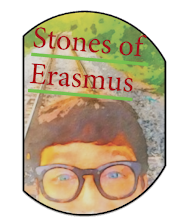Luis Buñuel’s 1972 film, The Discreet Charm of the Bourgeoisie
I often have a recurring dream where I’m thrust onto a stage with no warning. Someone hands me a script or whispers lines from the wings, but no matter how hard I try, I can’t remember what to say. Sometimes I wander onstage at the wrong moment, sometimes I’ve had no rehearsal at all. If you’ve ever had this dream, you know that mix of panic and embarrassment—the feeling of being caught unprepared in front of an audience.
It’s a fairly common dream, one that makes me think of Shakespeare’s famous line: “All the world’s a stage, and all the men and women merely players.” At some level, maybe we all worry about “getting caught in the act”—of not performing our life’s roles correctly.
This fear of being exposed is brilliantly captured in Luis Buñuel’s 1972 film, The Discreet Charm of the Bourgeoisie. A staple of the Criterion Collection, it’s considered a classic of surrealist and absurdist cinema, and for good reason. Buñuel, who was associated with Salvador Dalí and other surrealists, loved to toy with social conventions, exposing them as both necessary and utterly absurd.
One scene in particular hits home for me. A group of bourgeois friends sits down to dinner in a strange, empty space—like an abandoned theater. Suddenly, there’s a persistent knocking sound. The confused dinner guests discover, to their horror, that a curtain has risen behind them, revealing a full audience. Someone off to the side tries to feed them lines, but they’ve forgotten their cues. In a neat twist, it turns out to be one character’s dream—an unsettling realization that resonates perfectly with my own recurring nightmare.
Watching that scene gives me a weird kind of solace. It’s Buñuel’s cinematic reflection of the universal anxiety that we’ll someday find ourselves onstage—caught without our lines, exposed as frauds. And yet, there’s something comical and liberating about it, too: the laughter we feel when we realize that maybe we’re all just fumbling through our parts together.
So thank you, Buñuel, for capturing in film what I’ve so often experienced in my sleep. Sometimes all you can do is wake up, laugh at the whole performance, and carry on—until the next time the red curtain rises.
***
I hope reading my blog post helps to convey a dream’s recurring nature and the link to Buñuel’s classic surrealist moment. Let me know what you think! Like my content—find my humanities based lesson plans on TpT.


